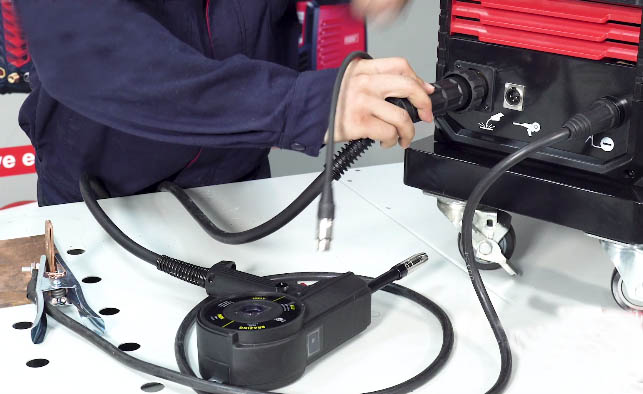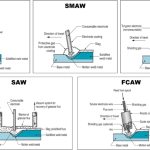Importance of Pure Argon Gas
When welding aluminum, it is essential to use pure Argon gas without the presence of Carbon Dioxide. The inclusion of Carbon Dioxide in your weld can lead to an unstable arc, which is not desirable.
Moreover, the presence of Carbon Dioxide hinders the proper melting of aluminum, affecting the welding process.
MIG Welding Aluminum with a Spool Gun
Welding Town
Importance of Preheating Thick Aluminum Parts
Due to the excellent heat absorption and dissipation properties of aluminum, it can be challenging to maintain a steady welder on a specific spot to achieve proper melting. However, there is a solution to this issue: preheating the metal using an oxy-acetylene torch.
Preheating the metal is a crucial step, especially when working with larger pieces of aluminum. With the oxy-acetylene torch, move it around the area you intend to weld, ensuring not to heat it to the point of melting.
Mastering Spool Gun Techniques for MIG Welding Aluminum
With all the necessary preparations complete, it’s time to begin the welding process. MIG welding aluminum follows a similar procedure to other metals, but the use of a spool gun may require some adjustment and adaptation. It can feel clunky at first, but with practice, you’ll become more comfortable using it. Additionally, it’s important to make proper adjustments to the speeds and feed settings to ensure optimal welding performance for the specific material.
Push Vs. Pull
In most cases of MIG welding, whether to push or pull the bead is a matter of personal preference. However, when it comes to aluminum welding, it is recommended to push the bead instead of pulling it. This is important to ensure that there is enough shielding gas ahead of the bead.
Pulling the bead, especially with aluminum, can potentially result in unnecessary porosity in the weld.
Optimizing Travel Speed and Angle
When it comes to aluminum welding, it is crucial to maintain an approximate 20-degree angle while welding. To give you a visual perspective, the tip of your nozzle should have a slight tilt while still remaining upright. This angle helps ensure proper penetration and weld quality.
In terms of travel speed, aluminum welding is a bit more nuanced. You will need to move faster compared to welding other metals. This aspect may require some practice and adjustment to achieve the desired results.
Adjusting Wire Feed Speed and Voltage
When welding aluminum, it is essential to use higher weld settings compared to those used for steel. Welder charts often provide recommended aluminum settings, which can serve as a good starting point for your welds.
In addition to adjusting the settings, you need to increase the pressure on your gas regulator to at least 35 CFH (cubic feet per hour). This higher gas flow rate ensures adequate shielding during the aluminum welding process.
It’s important to keep in mind that you may need to fine-tune these settings by raising or lowering them as you run a test bead to achieve the desired weld quality.
General MIG Welding Settings for Aluminum
| Voltage & Wire Feed Speed Settingsfor MIG Welding Aluminum | |||||
| Aluminum Thickness | |||||
| Wire Size | 14 ga | 1/8 in. | 3/16 in. | 1/4 in. | 3/8 in. |
| 0.030in. | 18V / 395 IPM | 22V / 440 IPM | 24V / 485 IPM | 26V / 530 IPM | – |
| 0.035in. | 18V / 350 IPM | 22V / 395 IPM | 24V / 440 IPM | 26V / 485 IPM | 28V / 530 IPM |
Proper Stick out for MIG Welding Aluminum
Achieving the appropriate stick out is crucial as it determines the proper distance between the welding gun and the base material. For MIG welding aluminum, the recommended stick out is approximately ¾ inch. This length is slightly longer than what most people use for welding other metals such as steel, but it is not excessively long.
The reason for this specific stick out length is the higher risk of wire burn-back when welding aluminum. By maintaining the proper stick out, you can help mitigate this issue and ensure a smoother welding process.
Common Challenges and Solutions in MIG Welding Aluminum
Welding aluminum can be a challenging process, and even professionals may encounter difficulties from time to time. If you find yourself facing issues such as a poor weld, it’s important not to become disheartened.
Instead, take a step back and carefully review your settings. Double-check the steps mentioned above to ensure you haven’t missed any crucial details. Just like with any other form of welding, it’s essential to practice patience and maintain a determined mindset while learning.












